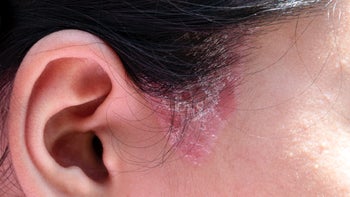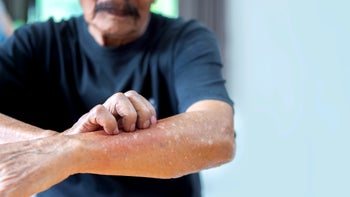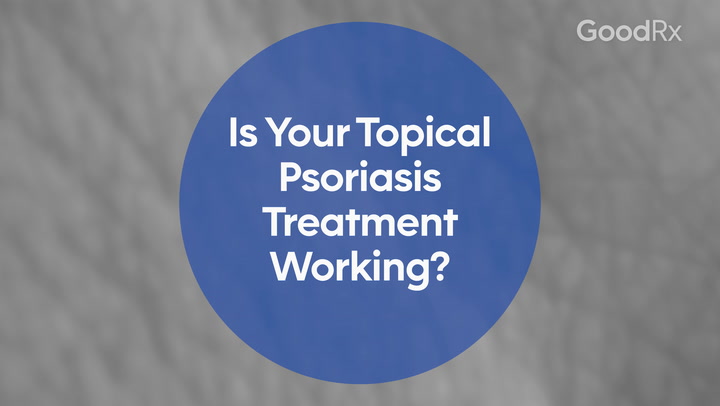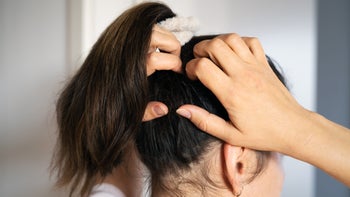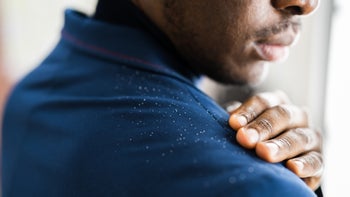
What Is Scalp Psoriasis? Symptoms, Pictures, Causes, and Treatments
Key takeaways:
Psoriasis is a chronic, autoimmune skin condition that causes skin cells to grow too quickly. When it affects the scalp, it creates thick, scaly patches on the scalp and around the hairline. These are called plaques.
Scalp psoriasis can be mistaken for dandruff. But unlike dandruff, psoriasis can affect other areas of skin besides the scalp. It can also affect nails and joints.
People with scalp psoriasis have a higher risk of developing joint psoriatic arthritis.
You can help improve scalp psoriasis with proper skin care and medications.
Table of contents
Psoriasis can cause itchy rashes across your body — including on your scalp. In fact, as many as 9 in 10 people with psoriasis experience scalp symptoms at some point in their lives. People often mistake it for dandruff, since both can appear flaky. Sometimes, scalp psoriasis and dandruff can look alike, but there are some important differences.
Psoriasis is harder to treat and can have internal effects in the body. But, thanks to science and research, there are many psoriasis treatment options that work well for many people.
What is scalp psoriasis?
Scalp psoriasis is psoriasis that affects the skin on the head. It’s not a type of psoriasis. It just describes the location of the psoriasis.
Psoriasis is a chronic skin condition that can affect skin anywhere on the body. It’s an autoimmune condition in which an overactive immune system causes skin cells to grow too fast. This leads to the formation of thick, discolored skin patches (called plaques).
There are several different types of psoriasis, but plaque psoriasis is by far the most common.
Symptoms of scalp psoriasis
Common symptoms of scalp psoriasis include:
Dry and flaking skin
Scalp burning or soreness
Itching
Bleeding
Hair loss or thinning (this is temporary)
Scalp psoriasis or dandruff? Learn how to tell the difference between these two common scalp conditions — with pictures.
Psoriasis on Black skin: See what psoriasis looks like in darker skin tones.
Common psoriasis triggers: From medications to certain foods, here are the most common triggers for a psoriasis flare.
Similar to psoriasis on other parts of the body, scalp psoriasis causes discolored, thickened, and scaly plaques of skin. These can be both within the hair and around the hairline. Plaques can also go beyond the hairline and onto the surrounding skin.
What does scalp psoriasis look like?
In fair skin, scalp psoriasis plaques are usually pink or red with white scales. In darker skin tones, plaques can be violet, brown, or skin-colored with white or gray scales. Scalp psoriasis may even cause temporary patches of hair loss.
Here are some pictures of scalp psoriasis in different skin tones.




What causes scalp psoriasis?
The cause of scalp psoriasis is the same as psoriasis on any other part of the body: Skin cells multiply too fast — over days rather than weeks. Instead of shedding dead cells slowly, they pile up into plaques and scales.
It’s not clear exactly why some people develop psoriasis. But genetics and the immune system seem to play a role.
Certain environmental triggers can cause psoriasis to flare. These include:
Cold, dry weather
Stress
Infections
Smoking
Alcohol
Stopping systemic steroids
Injuries to the skin, like cuts, scratches, or injections
How do you treat scalp psoriasis?
If you have psoriasis, it’s best to see a board-certified dermatologist to guide your treatment. Your exact plan will depend on how severe your psoriasis is.
Typically, treatment starts with good skin care and topical medications. These are medications you apply directly to the scalp, such as medicated shampoos, creams, and ointments.
Depending on how severe your symptoms are, you may also need to add other medications (more on this below).
Here’s an overview of the different treatment options that can help scalp psoriasis. They’re each discussed in greater detail below:
Topical medications: Medication applied directly to affected skin, including medicated shampoos, topical steroids, and topical vitamin D analogs.
Light therapy: Targeted phototherapy treatments, such as the use of an excimer laser.
Systemic treatments: Medications given as pills, shots, or infusions that work throughout the body. These aren’t commonly used alone to treat scalp psoriasis. They’re usually used only if scalp psoriasis is very severe, shows up on other parts of the body, or if it’s associated with psoriatic arthritis.
Topical treatments for scalp psoriasis
When treating scalp psoriasis, it’s common to start with topical medications meant for the scalp, like shampoo, liquid, or foams. These are easier to apply in areas where there’s hair. Most people are able to manage their scalp psoriasis with these medications alone.
Here are some common topical treatments for scalp psoriasis.
OTC medicated shampoos
Over-the-counter (OTC) medicated shampoos are a good starting point for scalp psoriasis. These include shampoos that contain salicylic acid (like DHS Sal Shampoo) and coal tar shampoos (like Neutrogena T/Gel).
Salicylic acid helps break apart psoriasis scales. Coal tar, on the other hand, helps slow down cell growth. You can use these products alone or with other medications, if needed.
Topical steroids
When you first see a dermatologist for scalp psoriasis, you’ll probably get a prescription for a topical steroid. Steroids work quickly to calm inflammation and improve psoriasis symptoms. Topical steroids commonly prescribed for psoriasis include:
Shampoos: Clobetasol propionate 0.05% shampoo (Clobex)
Liquids: Clobetasol propionate 0.05% solution, fluocinonide solution, desoximetasone 0.25% spray (Topicort spray)
Foams: Clobetasol propionate 0.05% foam, betamethasone valerate 0.12% foam
Side effects of topical steroids can include:
Skin irritation (like burning or stinging)
Thinning of the skin
Broken blood vessels
It’s not safe to use topical steroids continuously. Most topical steroids aren’t approved for treatment longer than 2 to 4 weeks at a time. To avoid this, your healthcare team might have you alternate different types of medications.
Topical vitamin D analogs
Topical vitamin D analogs are medications that slow the rapid cell turnover in psoriasis. They’re useful in a rotation with topical steroids. By alternating medications, it’s possible to maximize their effect while lowering the risk of steroid side effects.
Available vitamin D analogs include:
Solutions: calcipotriene 0.005% solution (Dovonex)
Foams: calcipotriene 0.005% foam (Sorilux)
Combination products
These combine a strong topical steroid with a vitamin D analog in one product:
Taclonex (betamethasone / calcipotriene) suspension
Enstilar (betamethasone / calcipotriene) foam
Wynzora (betamethasone / calcipotriene) cream
There’s data that combination treatment works better than either type of medication alone. But since these products contain betamethasone (a steroid), there’s a risk of steroid side effects. It’s not recommended to use these medications for more than 8 weeks at a time.
Light therapy
Light therapy (also called phototherapy) uses certain wavelengths of ultraviolet (UV) light to treat psoriasis. Ultraviolet B (UVB) light therapy is the most effective for psoriasis. It can be administered in a few different ways, both in office and at home.
When it comes to scalp psoriasis and psoriasis around the hairline, a type of light therapy called the excimer laser is especially effective. The excimer laser is a handheld device that delivers a painless beam of high-intensity UVB light. Compared to other UVB units, it emits a narrower beam of light that can reach scalp psoriasis plaques through parted hair.
Other types of UVB light treatments are unable to penetrate hair. That means they won’t work for scalp psoriasis unless used on a bald head.
Excimer laser treatment has to be done 2 to 3 times a week by a trained medical professional in their office. In one study on the excimer laser, symptoms improved in 11 out of 20 people with scalp psoriasis who got the treatment.
The excimer laser can also be used in combination with other treatments. It’s a good option for stubborn scalp plaques that haven’t completely responded to other treatments.
Systemic treatments
It’s unusual to treat scalp psoriasis with whole body (systemic) medications like pills or injections. But these medications can help if you have severe scalp psoriasis, psoriasis in other areas, or psoriatic arthritis.
Oral medications (pills)
Oral medications (pills) that treat scalp psoriasis include:
Older immunosuppressants, like methotrexate (Trexall) and cyclosporine (Sandimmune), which prevent the immune system overactivity that contributes to psoriasis
Acitretin, a form of vitamin A that slows cell turnover to help clear psoriasis
Apremilast (Otezla), a newer medicine that decreases inflammation inside of cells
Biologics
Biologic medications are immune therapies that come as injections or infusions. They’ve revolutionized the treatment of many inflammatory diseases, including psoriasis.
Examples of biologics used to treat moderate to severe plaque psoriasis are:
If you need a biologic, your dermatologist will guide you on which one is best for you. They’ll consider whether you have joint symptoms, the dosing schedule, and what your insurance will cover.
Self-care & home remedies for scalp psoriasis
Treating scalp psoriasis starts with good scalp skin care to help keep your scalp and hair healthy. Here are some tips for what that means in practice:
Use a shampoo that softens the scale, like a salicylic-acid-based shampoo.
Gently brush the scale away with a comb while your scalp is still wet after shampooing. Be careful not to damage the scalp.
Use a conditioner every time you wash your hair, to help add moisture and counteract dryness caused by medications.
Use a humidifier in the winter, to avoid drying out your skin and hair.
Don’t pick — picking can cause psoriasis to intensify and create scarring.
Avoid blow drying with hot air, which can dry out skin and hair. (Use cool air, if needed.)
Avoid tight hairstyles.
Minimize hair coloring, perms, and relaxers.
Try a natural solution, like a 0.5% aloe vera cream, to reduce redness and scaling.
You can also try a 1:1 apple cider vinegar and water solution, to reduce itching.
Frequently asked questions
Scalp psoriasis and dandruff can both cause itchy flakes, but they’re separate conditions. Psoriasis is a chronic autoimmune skin condition that causes thick plaques. Dandruff, on the other hand, is caused by an overreaction to a yeast that normally lives on the skin. Instead of plaques, it causes yellow or white greasy flakes.
Psoriasis and eczema are two common conditions that cause itchy patches on the skin. But they have different causes. They also show up in slightly different places on the body:
Eczema usually involves skin folds, like the neck, behind the knees, and the inside of the arm.
Psoriasis typically affects the scalp, elbows, and knees.
There’s no cure for psoriasis. But medications can help clear the skin plaques and improve symptoms. Avoiding psoriasis triggers is also an important way to keep skin symptoms from flaring up.
Scalp psoriasis can sometimes cause temporary hair loss. When the skin plaques get too thick, they can stop hair from growing. Once the plaques are treated, hair usually grows back. To reduce your risk of hair loss, gently brush the scale away to stop it building up. But avoid picking or scratching at your skin: Scalp scarring can also cause hair to stop growing.
No. Scalp psoriasis isn’t an infection, and it’s never contagious. You can’t get psoriasis from touching it.
The bottom line
If you have redness, itching, or flaking in your scalp, see your primary care provider or a dermatologist. You could have scalp psoriasis. Most of the time, scalp psoriasis can be treated with medicated foams and/or shampoos and good scalp care. But scalp psoriasis can look similar to dandruff and scalp eczema, so it’s important to get the diagnosis right.
Why trust our experts?



Images used with permission from VisualDx (www.visualdx.com).
References
American Academy of Dermatology Association. (n.d.). Scalp psoriasis: 10 ways to reduce hair loss.
Armstrong, A. W., et al. (2020). Pathophysiology, clinical presentation, and treatment of psoriasis: A review. JAMA.
Coondoo, A., et al. (2014). Side-effects of topical steroids: A long overdue revisit. Indian Dermatology Online Journal.
Delzell, E. (2024). Best psoriasis shampoos your scalp will love. National Psoriasis Foundation.
Dopytalska, K., et al. (2018). Psoriasis in special localizations. Reumatologia.
National Psoriasis Foundation. (2020). Integrative approaches to care.
National Psoriasis Foundation. (2023). Over-the-counter topicals.
National Psoriasis Foundation. (2024). Phototherapy for psoriasis.
National Psoriasis Foundation. (2024). Scalp psoriasis.
Patel, D. S., et al. (2020). Efficacy of fixed-combination calcipotriene 0.005% and betamethasone dipropionate 0.064% foam for scalp plaque psoriasis: Additional analysis of a phase ii, randomized clinical study. The Journal of Clinical and Aesthetic Dermatology.
Rattanakaemakorn, P., et al. (2019). Efficacy and safety of 308-nm excimer lamp in the treatment of scalp psoriasis: A retrospective study. Photodermatology, Photoimmunology & Photomedicine.
Singh, S., et al. (2000). Topical therapy for psoriasis with the use of augmented betamethasone and calcipotriene on alternate weeks. Journal of the American Academy of Dermatology.
Wong, J. W., et al. (2012). Excimer laser therapy for hairline psoriasis: A useful addition to the scalp psoriasis treatment algorithm. Skin Therapy Letter.











